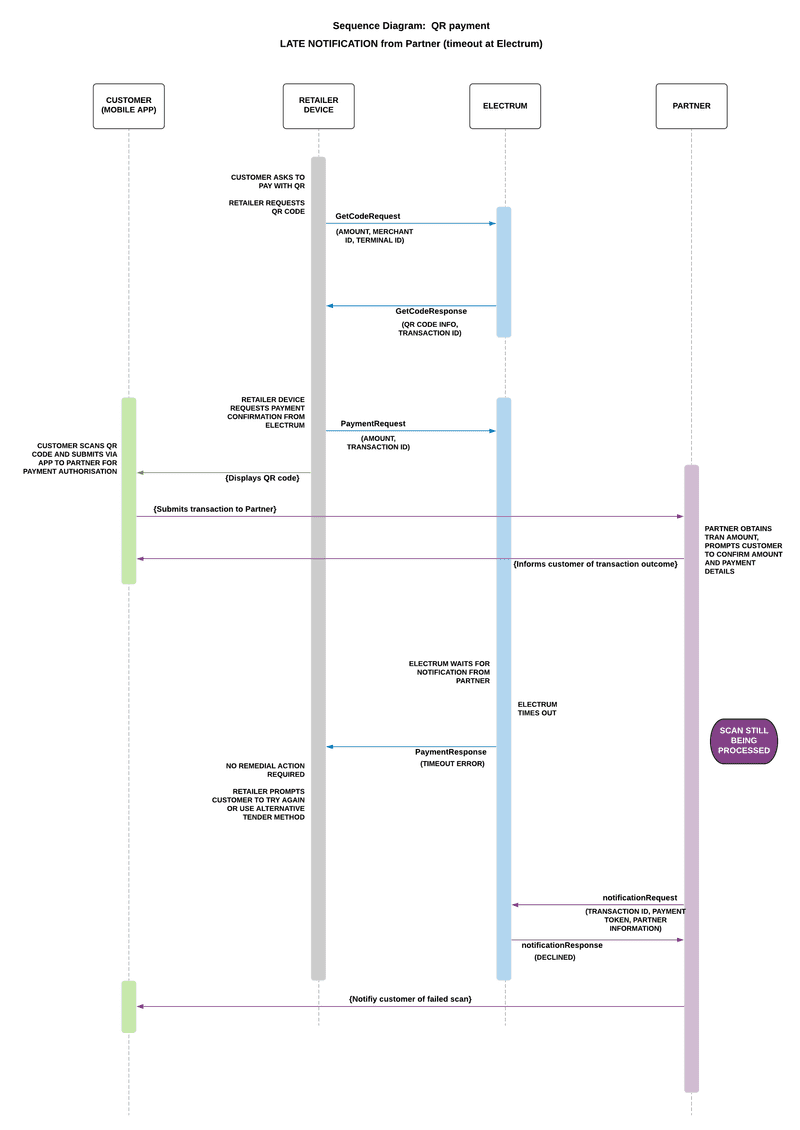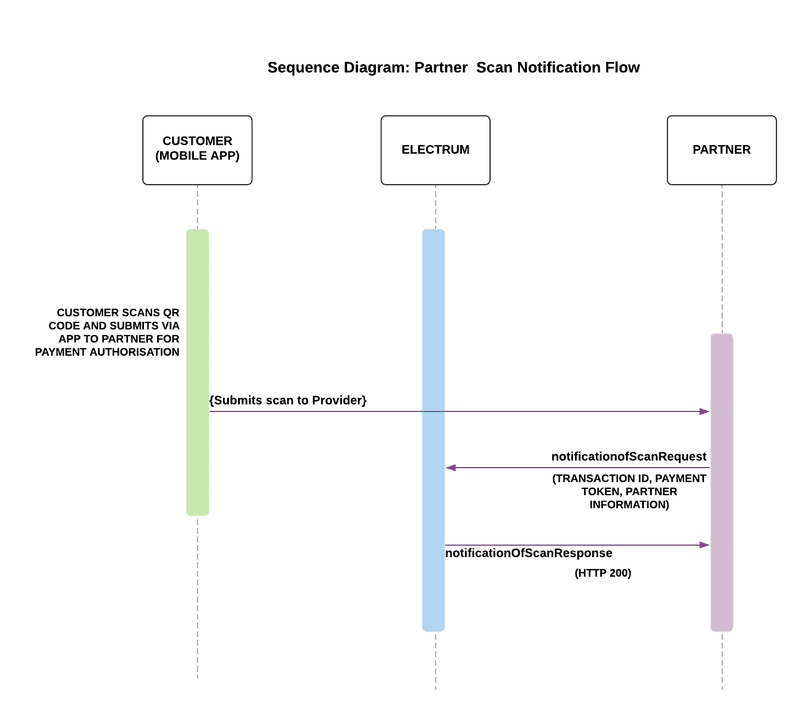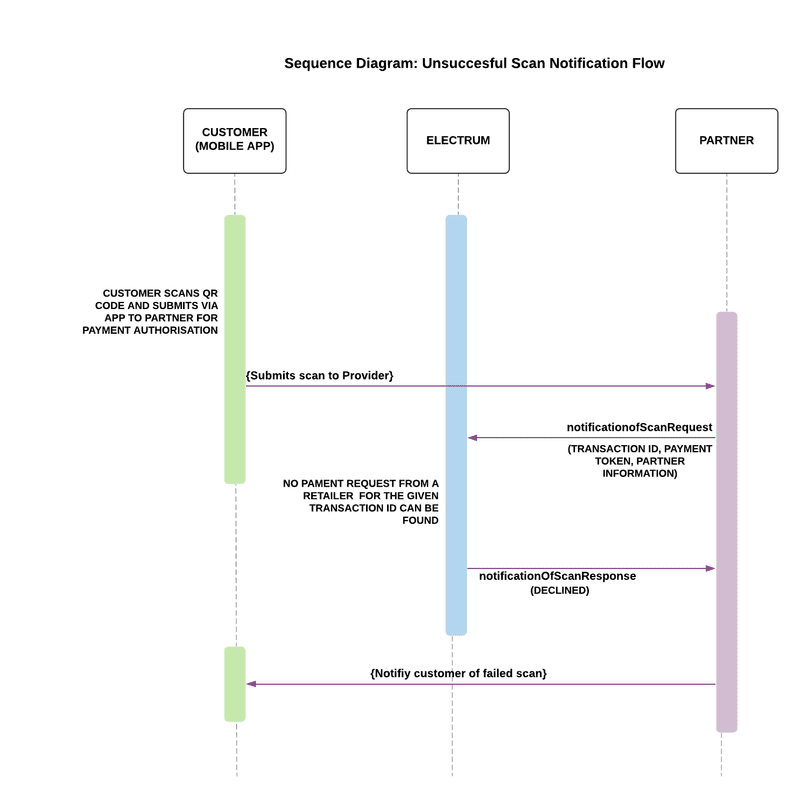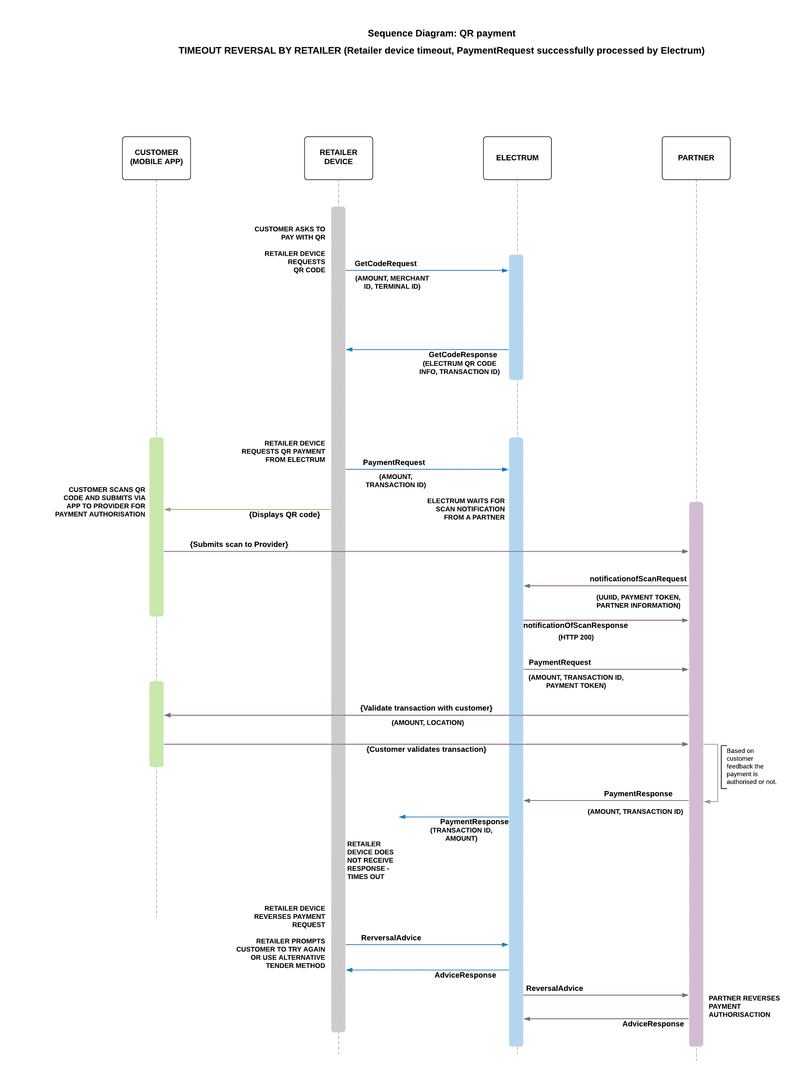Message Flows
Overview
From a partner perspective the flow for a QR payment is comprised of the following operations:
- Notifying Electrum of a QR Code scan.
- Receiving a payment authorisation request associated with the above scan.
- Finalising or reversing this payment based on the advice message received.
Scan Notifications
Once a scan is made by a mobile application it is necessary to notify the Electrum server of this action by sending a ScanNotification.
As it is not possible for the retailer to know at tender time which Partner has been selected by the customer the
ScanNotification plays the important role of alerting the Electrum system which Partner has been selected for a given PaymentRequest.
The ScanNotification carries the unique transaction ID (tranId) encoded in the QR code and allows the Electrum system to match the scan
to the PaymentRequest sent upstream by the retailer.
Unsuccessful scenarios
There are a number of scenarios in which it is possible for a ScanNotification to fail. In these scenarios it is necessary to notify the customer via the application that their request to tender has failed. Examples include the following:
-
The
ScanNotificationreached Electrum after the agreed upon timeout window had elapsed
-
The
ScanNotificationarrived at Electrum before thePaymentRequestfrom the retailer.
Payment Authorisations and Finalisations
Once a ScanNotification is received it is possible for the Electrum system to process the associated PaymentRequest received from the retailer.
The payment flow is dual message and comprised of two messages:
- A payment authorisation request (
PaymentRequest) which requests the funds to be reserved for tender by the Partner. -
One of the following two advice messages which will be sent “offline” and subject to SAF:
- A finalisation advice (
ConfirmationAdvice) which signifies that the tender was successfully completed by the Retailer and the funds should be withdrawn. - A reversal (
ReversalAdvice) which signifies that the tender was not completed and that the reservation on the funds should be removed.
- A finalisation advice (
Tender Reversals and Timeout Reversals
It is also a requirement that payment authorisations be reversible within an agreed upon processing window. These reversals may be sent in either of the below two scenarios
- By a Retailer to void an otherwise successfully processed payment authorisation. This may for any number of reasons: the customer has opted to not go through with the tender, the POS malfunctioned, the basket has been voided, etc.
- By Electrum in cases where no response to a PaymentRequest was received and the state of the transaction upstream is unknown. In this scenario a reversalAdvice, as a “Timeout Reversal”, will be sent to ensure that it is safe for downstream entities to proceed as if the transaction has not gone through. As reversalAdvice will be subject to SAF it is guaranteed that this transaction will eventually be reversed. Please see the Advanced Topics section for more about offline messages and SAF queues.
In both the above cases, reversals are only effective if received within the processing window agreed for the settlement process between the affected parties (typically one to three days), and thus will not be used as a general purpose refund mechanism. Reversals that take place either after a payment was already confirmed or too long after the initial transaction falls out of scope of this document, as does customer refunds and return of goods.
The flow for a Timeout Reversal between a processor and Electrum is as per the below diagram:
The full flow for a retailer triggered payment reversal is as per the below diagram.
The full flow for a TimeoutReversal is as per the below diagram.






